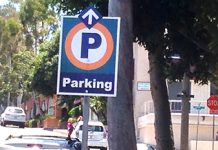View preservation and public safety received top billing at Laguna Beach’s City Council, which heard testimony Tuesday on progress by a committee drafting a new view ordinance and from staff investigating the addition of video surveillance cameras downtown and at the city’s exit points.
Larry Nokes, chair of the view equity committee established in January, told council members a consensus is emerging and noted that “the folks concerned with view restoration were not so far from the people who feared clear cutting,” an option he insisted was never on the table.
Because points of contention still remain, Nokes said he had begun to meet with groups separately and plans to bring them together to hash out their differences before the eight-member committee comes up with a finalized draft of the ordinance to present to the council. Three groups, including the recently formed Citizens for View Preservation and Restoration, the Beautification Council and Village Laguna have all contributed input, Nokes said.
Borrowing ideas from court-tested ordinances in Rancho Palos Verdes and Tiburon, Nokes said the committee took the premise that views are a vital resource and worked on a framework to protect them. The current draft outlines a process where the property owners faced with a view obstruction would first contact the vegetation owner to attempt an amicable resolution. Failing that, property owners would seek mediation arranged by the city. If that too failed, property owners could file a formal view restoration claim before a yet to be established committee that would assess the view blockage and make a recommendation.
The burden of cost is among the few differences that remain, said Greg Gilroy, on the steering committee of Citizens for View Preservation and Restoration. “We feel strongly that no one should pay to manage the vegetation of another home owner,” he said, countering the draft proposal’s stipulation that the view claimant cover initial costs.
The city bears some responsibility for inadequately educating the public about responsible landscaping choices, said Laguna Nursery owner Ruben Flores, pointing out an oak tree just planted by city workers in a beautification project on Broadway Street will, ironically, likely block the office view of Nokes in a few years.
Because situations will vary, resident Bob Chapman urged the inclusion of more objective criteria and conditions in the ordinance to strengthen the oversight committee’s rulings. “We need to get as far into the objective world as we can,” agreed council member Bob Whalen, who also asked staff to investigate legal costs in the event the ordinance is challenged as well as any inconsistencies with the city’s general plan.
Council member Steve Dicterow proposed that the deciding committee be composed of five members with one-year terms, with each city council member appointing one person.
While some residents have been vilified for speaking up for the trees, the door swings both ways. “I resent people that want to preserve their views being called tree haters,” lamented Lynda Wisecup. “We all love trees, and we all love views, and I think something can be done for everybody.”
“There are no tree haters here,” agreed Dave Russell, but said an ordinance is needed to help people with view obstructions.
Council member Toni Iseman balked at the ordinance’s estimated $300,000 to $400,000 annual cost, and suggested dividing the enforcement costs equally between the city, the view claimant and the vegetation owner. City Manager John Pietig said costs were based on the experience of Rancho Palos Verdes and staff still needs to determine the manpower needed and fees to offset those costs.
With the Boston marathon bombing as the backdrop, council members put aside privacy concerns and supported the installation of public video monitoring equipment, taking advantage of a higher than anticipated general fund balance announced earlier this year.
Iseman’s request to use $90,000 of the $3.2 million windfall for surveillance cameras at strategic locations was endorsed unanimously by the other council members at a meeting in February.
Following up on Tuesday, police Captain Jason Kravetz described three different options: placing cameras downtown at key locations that generate complaints and public safety calls; installing traffic cameras to identify congestion; or adding cameras at the city’s three exit points.
Staff had yet to compile cost estimates for each, waiting for direction from the council on their preference, said Kravetz, who favored adding downtown cameras. A temporary video recording device installed at the bus depot recently, including two fixed cameras and one pan-tilt-zoom camera with an internal recorder, could be monitored from officers’ iPads and cars, and had already proven useful, he said.
To address privacy concerns, Kravetz said access would be restricted to only certain staff members. And “look at Boston,” he added. “They are worth their weight in gold when you need them.”
Iseman said she, too, had heard from residents concerned with civil liberties, but agreed that the use of video cameras in identifying the suspects in the Boston Marathon bombing offered a compelling counterpoint.
Before making a decision, the council asked Kravetz to investigate the costs for installing cameras downtown and at the town’s exits.




